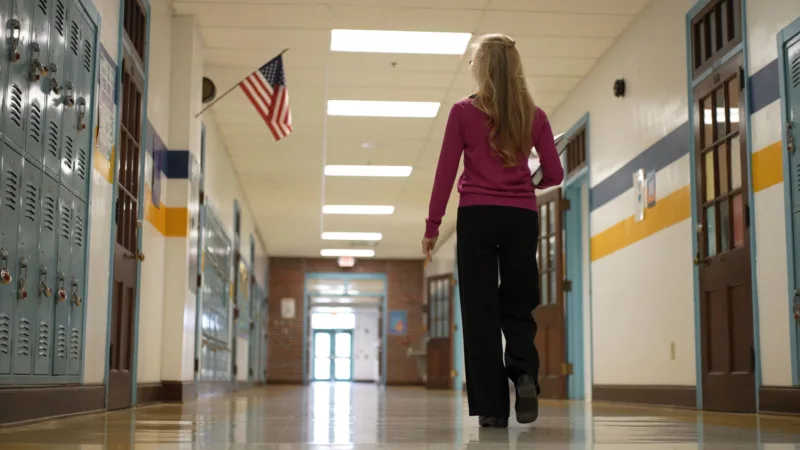Discover how modernizing student residency verification can maximize funding, ensure fairness, and improve campus safety in your school district.
The process of verifying student residency is a critical component of school district operations, directly impacting funding, fairness, and safety within educational communities. Traditional methods of residency verification have been labor-intensive and often intrusive, causing friction between districts and the families they serve. However, with the advent of modern technologies, such as those provided by Thomson Reuters’ Clear product, districts can now streamline this process, making it more efficient, accurate, and less intrusive.
The speakers in the webcast, Matt Federoff, Tina Onassis, and Nick Man, brought their collective expertise to the discussion on modernizing student residency verification.
Tina Onassis, with her 22 years of experience as a Residency Verification and Truancy Officer, Homeless Student Liaison, and Foster Student Liaison for the Chichester School District, shared insights into the traditional methods and the challenges they pose. Nick Man, as the Risk and Fraud Product Marketing Manager for Thomson Reuters, highlighted the benefits of leveraging technology, such as license plate recognition and public records data, to enhance the residency verification process.
Jump to ↓
| The challenges of traditional residency verification methods |
| The benefits of modernizing residency verification |
| Enhancing safety and fairness through technology |
| Best practices for implementing modern residency verification |
The challenges of traditional residency verification methods
Traditional residency verification methods have been criticized for being time-consuming and intrusive, often causing unnecessary friction between school districts and the communities they serve. Tina Onassis described the old methods as “boots on the ground,” involving personal contacts, door-to-door visits, and surveillance, which not only consumed significant resources but also potentially alienated families. The poll conducted during the webcast revealed that a significant majority of attendees considered student residency violations to be an increasing or serious challenge, underscoring the need for a more effective and modern approach.
When you are an employee or an administrator for a school district, this isn’t in your wheelhouse. You are there to educate. So any type of disruption within the community is going to definitely have some type of impact.
Residency Verification and Truancy Officer
The benefits of modernizing residency verification
Modernizing the residency verification process through modern technology can significantly improve accuracy, efficiency, and fairness. Nick Man explained how Thomson Reuters’ Clear product utilizes various data sources, including license plate recognition and public records, to provide districts with a more accurate and comprehensive view of student residency. This not only helps in ensuring that students are enrolled in the correct district but also aids in maximizing funding and upholding fairness across the community.
Enhancing safety and fairness through technology
The webcast highlighted the critical link between student residency data and campus safety. By ensuring that residency information is accurate and up-to-date through modern technology, districts can better identify potential safety risks and take proactive measures. Moreover, modernized residency verification can help eliminate bias in the enrollment process, ensuring that all students are treated fairly and have equal access to educational resources.
Best practices for implementing modern residency verification
The discussion during the webcast touched upon the importance of implementing best practices in residency verification, including the use of technology to streamline the process and training staff to handle sensitive information effectively. Tina Onassis shared her district’s approach to central registration and the use of online platforms to gather and verify residency information, highlighting the benefits of a coordinated and technology-driven approach.
By leveraging technology and adopting best practices, school districts can maximize funding, ensure fairness, and improve campus safety. The webinar “Funding, Fairness & Safety: Why Modernizing Student Residency Verification Matters More Than Ever” provided valuable insights into the challenges and opportunities associated with modernizing residency verification. For those who missed the live event, watching the on-demand version can provide critical insights into how to reimagine residency verification as a strategic advantage, rather than just a compliance requirement.
Watch the webinar now to discover how you can modernize your student residency verification process and reap the benefits of improved funding, fairness, and safety.

Webinar
Funding, Fairness & Safety: Why Modernizing Student Residency Verification Matters More Than Ever
Watch now ↗
Disclaimer
Thomson Reuters is not a consumer reporting agency, and none of its services or the data contained therein constitute a ‘consumer report’ as such term is defined in the Federal Fair Credit Reporting Act (FCRA), 15 U.S.C. sec. 1681 et seq. The data provided to you may not be used as a factor in consumer debt collection decisioning, establishing a consumer’s eligibility for credit, insurance, employment, government benefits, or housing, or for any other purpose authorized under the FCRA. By accessing one of our services, you agree not to use the service or data for any purpose authorized under the FCRA or in relation to taking an adverse action relating to a consumer application.











